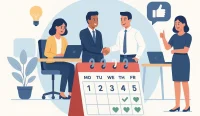In our hyper-connected world, digital overload has become one of the most significant challenges affecting productivity, focus, and mental well-being. The constant barrage of information, notifications, and digital stimuli can leave us feeling overwhelmed, distracted, and mentally exhausted. Understanding how to overcome digital overload is essential for maintaining peak performance in both personal and professional life.
This comprehensive guide explores the four digital supervillains that hold us back in the digital age and provides actionable strategies to combat them effectively. By implementing these proven techniques, you can reclaim your focus, enhance your memory, and develop a healthier relationship with technology.
Key Digital Overload Symptoms:
- Information overwhelm – Feeling drowned by endless data streams
- Constant distraction – Inability to focus on single tasks
- Memory dependence – Over-reliance on digital devices for basic recall
- Reduced critical thinking – Skipping mental processing in favor of quick searches
- Mental fatigue – Exhaustion from constant digital stimulation
Recognizing these symptoms is the first step in developing effective strategies to overcome digital overload and restore mental clarity and focus.
The Four Horsemen:
- Digital Deluge – Information overwhelm and data flooding
- Digital Distraction – Constant interruptions and attention fragmentation
- Digital Dementia – Memory atrophy from device dependence
- Digital Deduction – Reduced critical thinking and problem-solving skills
The Four Horsemen of the Mental Apocalypse
Understanding Digital Overload
Digital overload isn’t just about having too much information—it’s about the cumulative impact of constant digital stimulation on our cognitive abilities and mental health. Our brains, while incredibly powerful, weren’t designed to handle the relentless stream of data, notifications, and digital distractions that characterize modern life.
Each of these supervillains requires specific combat strategies, but they all stem from the same root cause: unconscious and excessive technology usage that undermines our natural cognitive abilities.
1. Digital Deluge: Combatting Information Overwhelm
The Problem of Information Flooding
Digital deluge represents the overwhelming flood of information we face daily, making it feel like trying to drink water from a fire hose. This constant stream of data can paralyze decision-making and create analysis paralysis, preventing us from taking meaningful action.
Signs of Digital Deluge:
- Email overwhelm – Hundreds of unread messages
- News consumption – Constantly checking multiple news sources
- Social media scrolling – Endless feeds without purpose
- Information hoarding – Saving articles and resources you never revisit
- Decision fatigue – Exhaustion from processing too many options
The key to overcoming digital deluge lies in developing effective filtering and focusing mechanisms that allow you to prioritize what truly matters.
The Filter and Focus Strategy
The most effective strategy to overcome digital deluge involves two simple but powerful steps: filter and focus. This approach helps you cut through the noise and concentrate on what genuinely deserves your attention.
Filter and Focus Implementation:
- Prioritize ruthlessly – Ask “What truly deserves my attention?”
- Set information boundaries – Limit sources to essential ones only
- Schedule information consumption – Designate specific times for news and updates
- Use the 80/20 rule – Focus on the 20% of information that provides 80% of value
- Implement information triage – Sort incoming data by urgency and importance
By consistently applying these filtering principles, you can dramatically reduce information overwhelm while ensuring you don’t miss critical information that matters to your goals and responsibilities.
2. Digital Distraction: Mastering Single-Tasking
The Myth of Multitasking
Digital distraction is perhaps the most pervasive of the four supervillains, with the average person checking their phone over 150 times per day. This constant switching between tasks and digital stimuli fragments our attention and significantly reduces our ability to perform deep, meaningful work.
Multitasking Reality Check:
- Brain limitation – The brain can only truly focus on one task at a time
- Performance cost – Switching between tasks reduces efficiency by up to 40%
- Quality degradation – Multitasking leads to shallow, error-prone work
- Mental fatigue – Constant task-switching exhausts cognitive resources
- Memory impairment – Divided attention weakens memory formation
Understanding that multitasking is a myth is the first step in developing strategies to overcome digital distraction and improve focus.
The Power of Single-Tasking
Single-tasking represents the ultimate superpower for combating digital distraction. By focusing on one task at a time, you can dramatically improve your performance, reduce stress, and produce higher-quality work.
Single-Tasking Strategies:
- Time blocking – Allocate specific time slots for different activities
- Device boundaries – Keep phones and other distractions out of reach during focused work
- Notification management – Turn off non-essential alerts and check messages at designated times
- Environment design – Create distraction-free workspaces
- Attention training – Practice mindfulness and concentration exercises
The art of learning is the art of attention, and single-tasking is the foundation for developing the deep focus necessary for meaningful learning and productivity.
Strategies to Overcome Digital Overload
From constant notifications to endless screen time, digital overload drains focus and productivity. Employers can fight back by hiring talent skilled in balance, efficiency, and digital wellbeing. Post your job on WhatJobs today and connect with professionals who know how to thrive in a digital world.
Post a Job Free for 30 Days →3. Digital Dementia: Exercising Your Memory Muscles
The Problem of Digital Dependence
Digital dementia refers to the over-reliance on digital devices that causes our natural memory capabilities to atrophy. When we depend on GPS for navigation, smartphones for phone numbers, and search engines for basic facts, we’re not exercising the cognitive muscles that keep our memory sharp and active.
Signs of Digital Dementia:
- Phone number amnesia – Can’t recall important numbers without looking them up
- Navigation dependence – Unable to navigate familiar routes without GPS
- Fact-checking addiction – Constantly searching for information instead of recalling it
- Memory outsourcing – Relying on devices to remember appointments and tasks
- Cognitive laziness – Avoiding mental effort in favor of digital shortcuts
This digital dependence weakens our natural memory capabilities and reduces our ability to think independently and creatively.
Mindful Memory Practice
The antidote to digital dementia is mindful memory practice—intentionally exercising your brain’s natural capabilities instead of outsourcing them to digital devices.
Memory Exercise Strategies:
- Manual dialing – Occasionally dial phone numbers from memory
- GPS-free navigation – Try navigating familiar routes without digital assistance
- Memory games – Engage in puzzles, crosswords, and memory training exercises
- Active recall – Test yourself on information instead of immediately looking it up
- Analog tools – Use physical notebooks and calendars to exercise memory muscles
Remember: if your life is worth living, it’s worth remembering. Regular memory practice keeps your cognitive abilities sharp and reduces dependence on digital crutches.
4. Digital Deduction: Reclaiming Critical Thinking
The Search Engine Trap
Digital deduction occurs when we skip the thinking process and immediately turn to search engines for answers. While search engines are valuable tools, over-reliance on them can diminish our ability to engage in deep, critical thinking and problem-solving.
Signs of Digital Deduction:
- Instant searching – Immediately googling instead of thinking through problems
- Algorithm dependence – Relying on recommendations instead of making independent decisions
- Shallow research – Accepting first search results without deeper investigation
- Reduced curiosity – Not exploring topics beyond what’s easily searchable
- Decision paralysis – Unable to make choices without extensive online research
This pattern of digital deduction can significantly impair our ability to think critically and solve complex problems independently.
The Pause and Ponder Strategy
The most effective strategy to overcome digital deduction is to pause before reaching for digital devices and engage in deliberate thinking first.
Pause and Ponder Implementation:
- Pre-search thinking – Take time to consider what you already know about a topic
- Curiosity cultivation – Ask deeper questions before searching for answers
- White space scheduling – Designate time for uninterrupted thinking
- Problem-solving practice – Work through challenges mentally before seeking digital assistance
- Verification approach – Use search engines to verify your thinking, not replace it
By developing the habit of pausing and pondering before searching, you can maintain and strengthen your critical thinking abilities while still benefiting from digital resources.
Strategies to Overcome Digital Overload
From constant notifications to endless screen time, digital overload drains focus and productivity. Employers can fight back by hiring talent skilled in balance, efficiency, and digital wellbeing. Post your job on WhatJobs today and connect with professionals who know how to thrive in a digital world.
Post a Job Free for 30 Days →5. Digital Detox: The Ultimate Reset Strategy
The Power of Disconnection
A digital detox represents one of the most powerful strategies to overcome digital overload. By temporarily disconnecting from digital devices, you can reset your relationship with technology and rediscover your natural cognitive abilities.
Digital Detox Benefits:
- Mental restoration – Give your brain time to recover from constant stimulation
- Focus improvement – Reset attention span and concentration abilities
- Memory enhancement – Exercise natural memory without digital crutches
- Stress reduction – Eliminate the constant pressure of digital notifications
- Self-awareness – Gain insight into your digital usage patterns
Sometimes you have to disconnect to reconnect—with yourself, your body, and your mind.
Implementing Your Digital Detox
Starting with a full 24-hour digital detox can be overwhelming for many people. Instead, begin with smaller, manageable steps and gradually increase your detox periods.
Digital Detox Progression:
- 30-minute sessions – Start with short periods of device-free time
- Meal times – Keep devices away during breakfast, lunch, and dinner
- Evening wind-down – Create device-free hours before bedtime
- Weekend mornings – Designate Saturday or Sunday mornings as digital-free
- Full day detox – Progress to complete 24-hour digital-free periods
The key is to start small and build consistency rather than attempting dramatic changes that are difficult to maintain.
6. Building Digital Awareness: The Tech Usage Audit
Tracking Your Digital Habits
Building awareness of your digital usage patterns is essential for developing effective strategies to overcome digital overload. A tech usage audit helps you understand exactly how much time you spend on different devices and activities.
Tech Usage Log Components:
- Phone checks – Record every time you pick up your phone
- Social media time – Track minutes spent on each platform
- Email frequency – Note how often you check and respond to emails
- Entertainment consumption – Log TV, streaming, and gaming time
- Work-related usage – Separate productive from unproductive digital time
Maintaining this log for one week can provide eye-opening insights into your digital habits and help identify areas for improvement.
Creating Your Conscious Tech Plan
Based on your tech usage audit findings, develop a conscious tech plan that aligns with your goals and values. This plan should be personalized to your specific needs and circumstances.
Conscious Tech Plan Elements:
- Email boundaries – Check emails only twice daily at designated times
- Social media limits – Set specific times and duration for social media use
- Notification management – Turn off non-essential alerts and notifications
- Tech-free zones – Designate certain areas or times as device-free
- Focus blocks – Schedule uninterrupted time for deep work and thinking
Remember: you want to use technology, not have technology use you. A conscious tech plan puts you back in control of your digital life.
Frequently Asked Questions
Q: What are the most effective strategies to overcome digital overload in a work environment?
A: The most effective strategies to overcome digital overload include implementing single-tasking with time-blocking, setting specific times for email checking, using airplane mode during focused work, and creating tech-free zones. Strategies to overcome digital overload work best when combined with clear boundaries and consistent practice.
Q: How long should a digital detox last to be effective?
A: While a 24-hour digital detox provides maximum benefits, strategies to overcome digital overload can start with just 30 minutes daily. The key is consistency rather than duration. Even short, regular breaks from digital devices can significantly improve focus and reduce mental fatigue.
Q: Can you still be productive while implementing strategies to overcome digital overload?
A: Yes, strategies to overcome digital overload actually increase productivity by improving focus, reducing distractions, and enhancing critical thinking abilities. Many people find they accomplish more meaningful work in less time when they implement these strategies consistently.
Q: How do you maintain strategies to overcome digital overload when your job requires constant digital connectivity?
A: Strategies to overcome digital overload can be adapted for digital-heavy jobs by setting specific times for different activities, using notification management tools, creating focus blocks, and implementing “deep work” periods. The goal is conscious, intentional use rather than complete avoidance.
The Path Forward: Mastering Your Digital Life
Strategies to overcome digital overload are not about eliminating technology from your life—they’re about developing a conscious, intentional relationship with digital tools that serves your goals and well-being. By understanding and combating the four digital supervillains, you can reclaim your focus, enhance your memory, and strengthen your critical thinking abilities.
Key Success Principles:
- Awareness first – Understand your current digital usage patterns
- Start small – Implement changes gradually for lasting success
- Consistency matters – Regular practice is more important than perfect execution
- Personalize your approach – Adapt strategies to your specific needs and circumstances
- Regular evaluation – Periodically assess and adjust your digital habits
Remember: your brain is your most powerful technology. When was the last time you took time to upgrade it? By implementing these strategies to overcome digital overload, you’re not just managing technology—you’re optimizing your most valuable asset: your mind.




